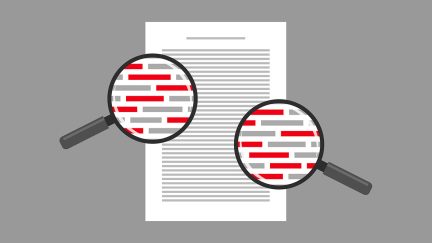Never miss a story — sign up for PLANADVISER newsletters to keep up on the latest retirement plan adviser news.
Delta Taps Fidelity to Run New Emergency Savings Program
Starting in January, Delta will give eligible employees up to $1,000 toward an emergency savings account if they complete a financial education program.

Delta Air Lines and Fidelity Investments have teamed up to put into action two trending topics in the retirement plan space: emergency savings funds and financial wellness.
Delta announced on Monday that eligible employees can opt to take an online financial education course and a series of one-on-one financial coaching sessions to earn a $750 kickstart for an emergency savings account. Delta will also match up to $250 for an employee’s contribution. U.S. employees below director level, including pilots, are eligible, and Delta will pay the taxes on the $1,000 it contributes to the account, according to the Atlanta-based company.
Fidelity will be administering the savings and company matching portion of the program through Fidelity Goal Booster, its out-of-plan short term savings account, according to the Boston-based recordkeeper. The program has similar elements to an emergency savings program Fidelity started with Starbucks in September 2022, but with a keen focus on how to ensure that employees receive useful financial education, says Katie Taylor, vice president of planning and engagement at Fidelity.
“Delta said to us that we want to build this program and yes, incentivize people to open an emergency account, and fund it, but also to educate them in a meaningful way,” she says. “They didn’t want it to just be a check the box, but for [participants] to really get something out of it.”
Participating employees will take an online financial education course of between two and three hours, then choose from three options for their coaching sessions: 1) managing day-to-day saving and spending; 2) strengthening financial foundations; and 3) focusing on future goals.
Operation Hope Inc., an Atlanta-based nonprofit, is also partnering in the program and will provide financial coaches as an option along with Fidelity. In the Fidelity program, employees will participate in a group online session, and then two one-on-one sessions either by phone, or in person with a Fidelity coach, Taylor says.
Employees participating in the program are prompted to set up the goal and open an account with Fidelity that is dedicated to emergencies and funded directly from their paycheck. That investment will go into Fidelity’s out-of-plan emergency savings account through a service called Goal Booster, which is designed to encourage regular savings with celebratory markers along the way, says Emily Kolle, vice president of product management for Fidelity.
“People can feel very negative about their short-term savings, so it helps to bring moments of joy and celebration into that savings journey,” she says.
The goal-driven savings model came out of research showing that it’s hard for people to “set-and-forget” putting aside emergency funds as they do with retirement payroll distribution, Kolle says. “We knew if a person would ‘set and forget’ their retirement savings, they should do the same thing for their emergency funds. But those behaviors weren’t flowing over … we made it easy for you to set up a recurring payment to yourself.”
Emergency savings payroll deduction is only available for plan sponsors who choose to offer the option to employees, according to the company. The Fidelity Goal Booster has no fees for use, and puts savings into Fidelity’s Cash Management account.
The SECURE 2.0 Act of 2022 retirement reform passed with the inclusion of emergency savings plan options, though they will not go into effect until 2024. Financial wellness for participants has also been a focus for recordkeepers such as Fidelity, as well as retirement plan advisers, with new products and offerings coming to market on a regular basis.
These issues were always important for plan sponsors, but the pandemic has made them higher on the list of priorities, Taylor says.
“Before plan sponsors were saying [having a savings fund] is something we need to solve for, but we’re not really sure we can right now,” she says. “Whereas now, this is absolutely a driver of many of the strategic conversations we have with our clients about benefits in the coming years.”
You Might Also Like:

Pontera, Fidelity Fight Over Third-Party Access to Plan Data

Required Amendments for Qualified Plans, 403(b)s Issued by IRS
